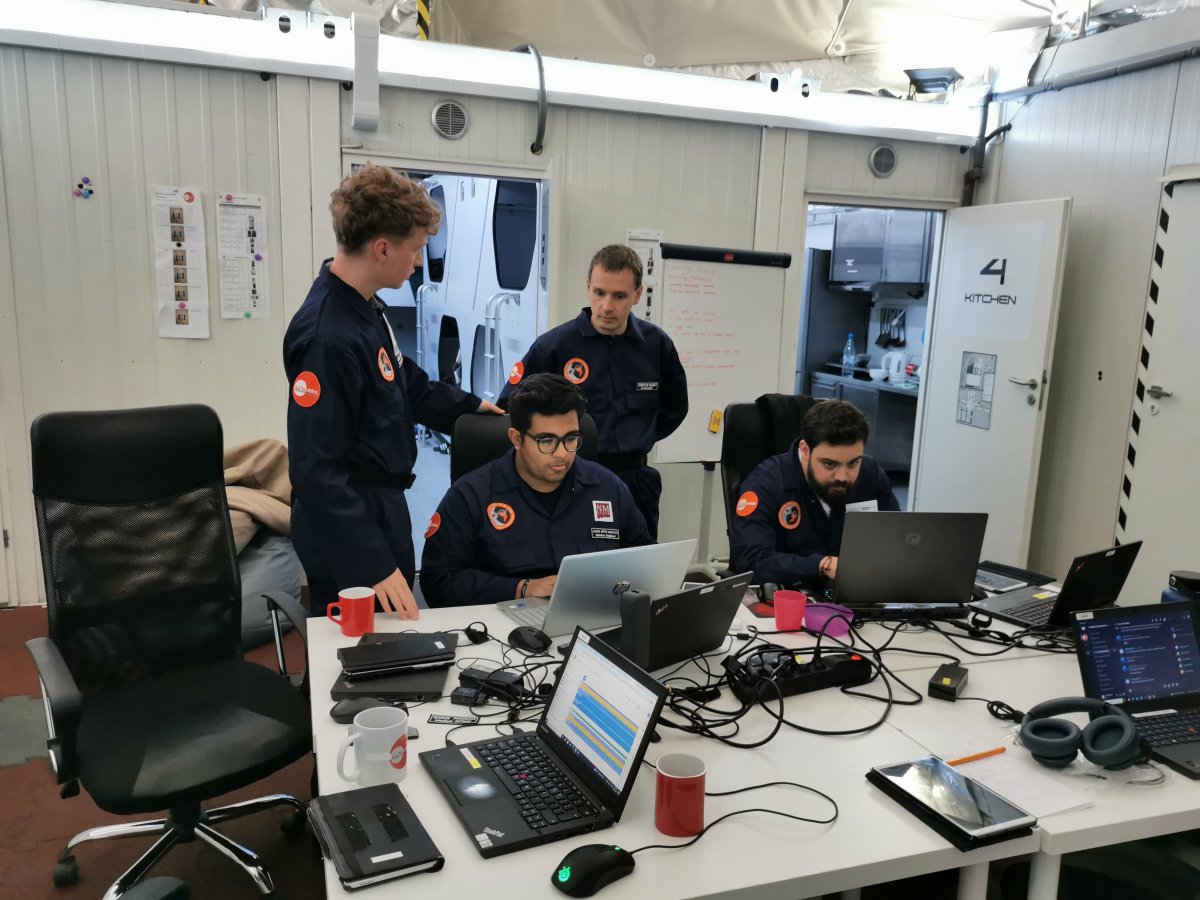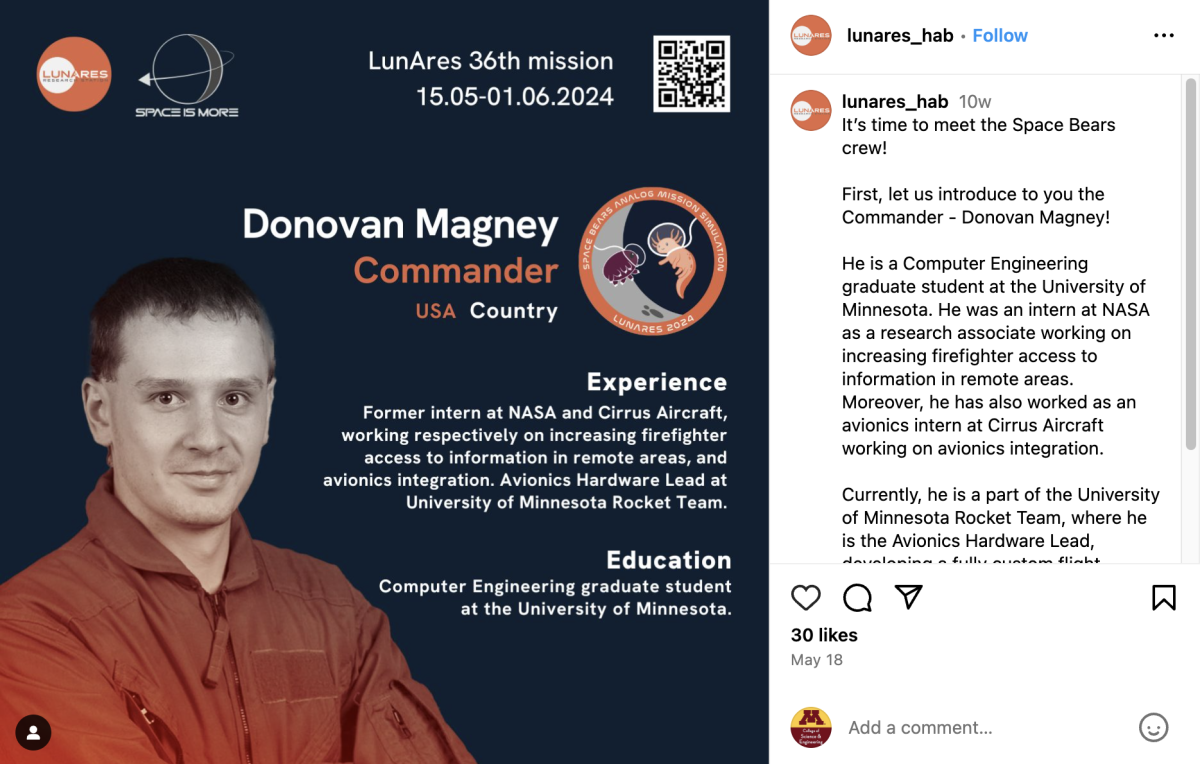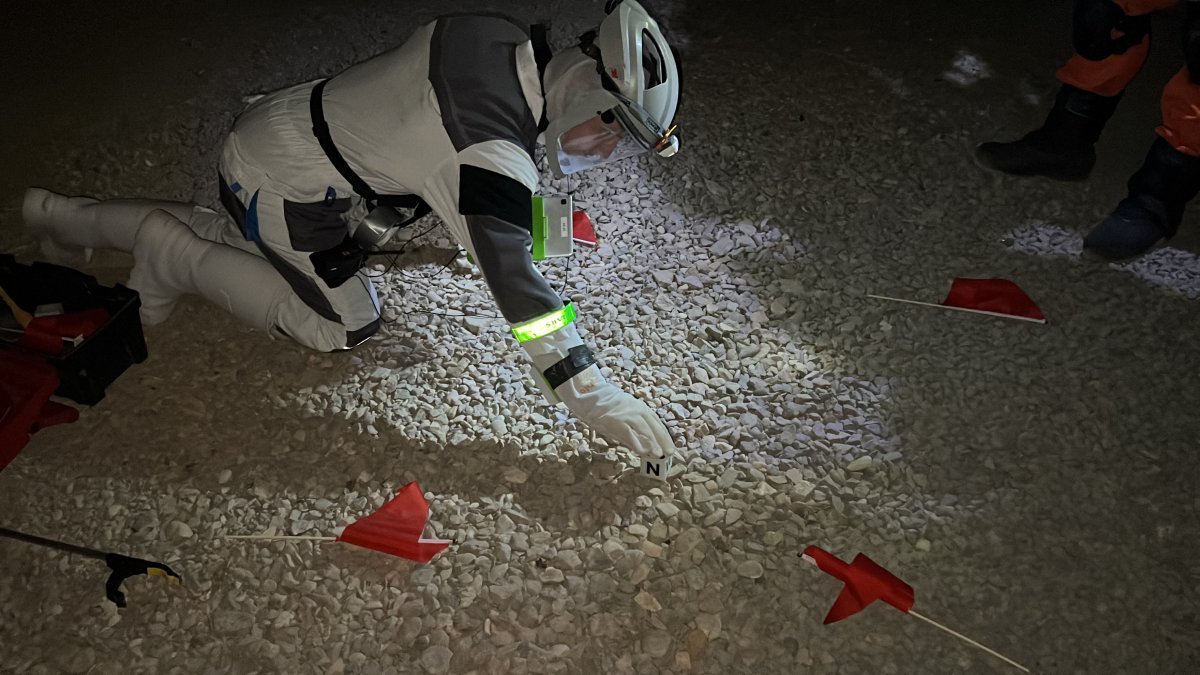CSE student participates in space mission simulation in Poland

Aspiring astronaut actively researched helping humans in space
MINNEAPOLIS / ST. PAUL (07/29/2024) — Donovan Magney, a University of Minnesota College of Science and Engineering computer engineering graduate student and aspiring astronaut received a glimpse into space travel when he recently participated in a LunAres Analog Astronaut Mission, an astronaut simulation research program.
Analog astronaut missions are field tests in locations that have physical similarities to the extreme space environments and play a significant role in problem solving for spaceflight research, according to NASA.
The LunAres Research Station in Piła, Poland was established in 2017 and specializes in lunar and Martian mission simulations. These missions simulate certain aspects of space missions to conduct research in a safe and cost-effective environment. Members of these missions come from around the world and are experts from fields like medicine, psychology, robotics, engineering, and space architecture.
"Participating in LunAres, as a student, was one of the most rewarding experiences and an excellent opportunity to work with people from all over the world. I was able to actively contribute toward research helping humans in space and am looking forward to participating in many more analog missions in the future," said Magney, who graduated this past spring with a bachelor’s degree in computer engineering from the University’s Department of Electrical and Computer Engineering.

Magney participated in a two-week isolation mission that simulated a lunar habitat and lunar terrain, where participants conducted research, took part in extra-vehicular activity (EVAs)—projects by the crew in the space outside a spacecraft—and worked on engineering projects to improve mission equipment. This type of training is very similar to what astronauts experience.

The research was focused on human factors in space, such as isolation, habitat layout, lack of sunlight, and crew makeup (or looking at what personalities work well together in these environments). Magney served as the commander of the Space Bears crew and was responsible for the safety, performance, and well-being of the crew. He coordinated each day’s objectives and served as the main contact between the crew and mission control.

As an undergraduate student, Magney took part in the College of Science and Engineering Mentor Program, one of the largest mentor programs at the University of Minnesota. Through this program, he was paired with a mentor who worked with NASA. Because of his interest in becoming an astronaut, the mentor recommended looking at analog astronaut mission programs like LunAres. He was also a recipient of the Roger Nordby Electrical Engineering Scholarship.
Magney serves as the hardware lead for avionics on the University of Minnesota Rocket Team and served in the Minnesota Army National Guard for nine years. He also is a licensed pilot and scuba certified. He has had internships with NASA and Cirrus Aircraft.
If you'd like to support students through scholarships and fellowships, visit the CSE giving website.
